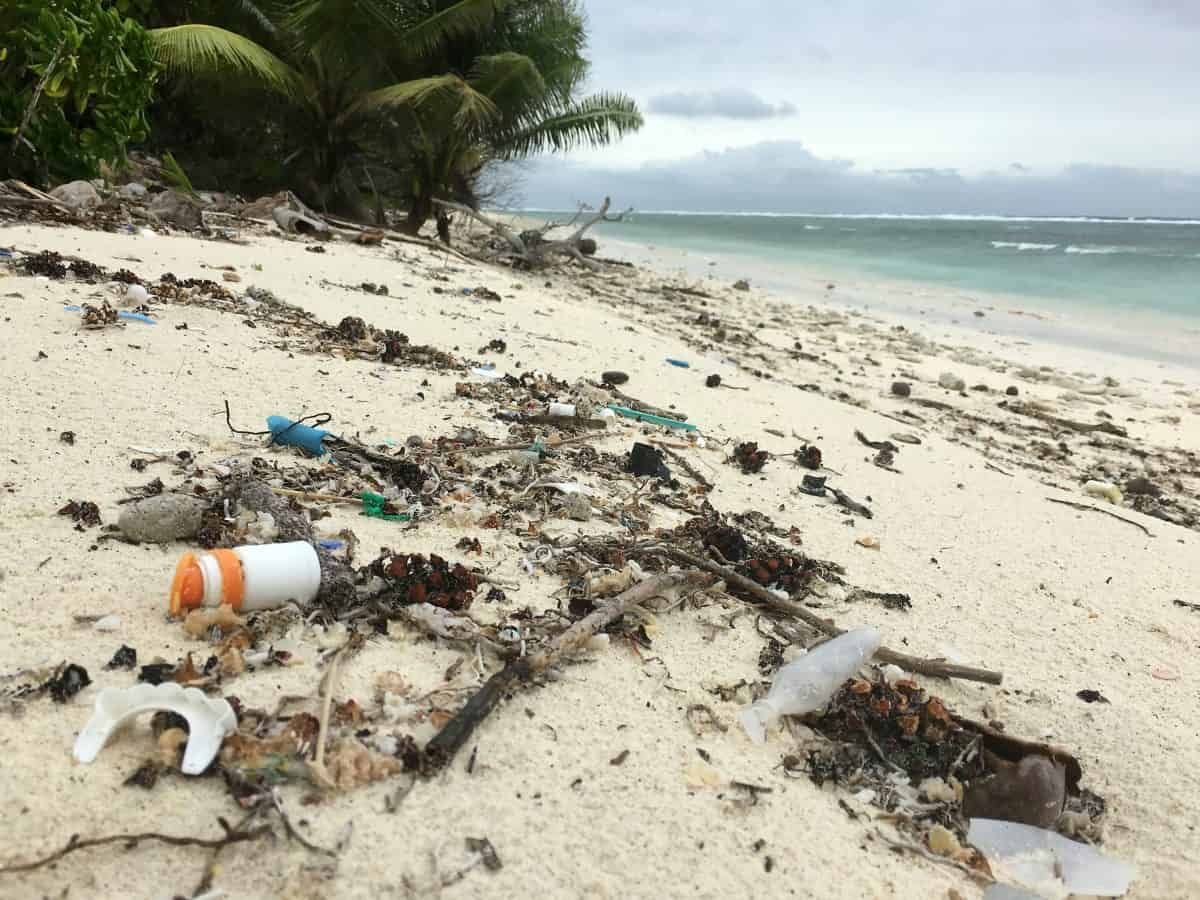
Australia’s lush tropical islands are being suffocated by an astonishing 414 million pieces of plastic – including 373,000 toothbrushes.
Once celebrated as “Heaven on Earth” by travel writers, now a monstrous 238 tonnes of plastic debris scatter the white sandy beaches of the Cocos Islands – including bottle caps, straws and flip-flops.
The remote islands are positioned between Australia and Sri Lanka in the Indian Ocean and only two of its 27 coral islands are inhabited.
The islands are lined with exotic palm trees while its turquoise waters offer world-class diving, snorkelling and excellent fishing.
But researchers from the University of Tasmania revealed the territory is home to 11 times more plastic litter than the highest density of plastic pollution reported in the world.
Dr Jennifer Lavers, who led the study, made global headlines in May 2017 when she revealed beaches on the remote Henderson Island in the South Pacific had the highest density of plastic in the world.
While the density of plastic debris on Cocos Islands beaches is lower than on Henderson, the total volume dwarfs the 38 million pieces, or 17 tonnes found on the Pacific island.
Dr Lavers said: “Islands such as these are like canaries in a coal mine and it’s increasingly urgent that we act on the warnings they are giving us.
“Plastic pollution is now ubiquitous in our oceans and remote islands are an ideal place to get an objective view of the volume of plastic debris now circling the globe.
“Our estimate of 414 million pieces weighing 238 tonnes on Cocos is conservative, as we only sampled down to a depth of 10cm and couldn’t access some beaches that are known debris hotspots.”
Unlike on Henderson Island, where most identifiable debris was fishing-related, the plastic on Cocos was largely single-use items such as bottle caps and straws and large numbers of shoes and thongs
Co-author Dr Annett Finger, from Victoria University in Melbourne, Australia, said global production of plastic continues to increase.
Almost half of the plastic produced over the past 60 years was manufactured in the last 13 years.
Dr Finger said: “An estimated 12.7 million tonnes of plastic entered our oceans in 2010 alone, with around 40 per cent of plastics entering the waste stream in the same year they’re produced.
“As a result of the growth in single-use consumer plastics, it’s estimated there are now 5.25 trillion pieces of ocean plastic debris.
“Plastic pollution is a well-documented threat to wildlife and its potential impact on humans is a growing area of medical research.
“The scale of the problem means cleaning up our oceans is currently not possible, and cleaning beaches once they are polluted with plastic is time consuming, costly, and needs to be regularly repeated as thousands of new pieces of plastic wash up each day.”
She added: “The only viable solution is to reduce plastic production and consumption while improving waste management to stop this material entering our oceans in the first place.”